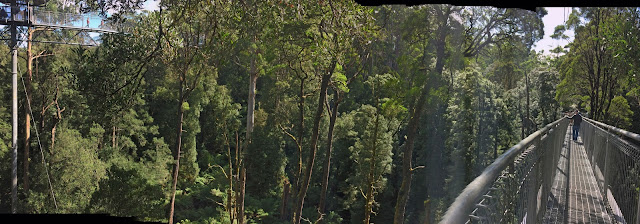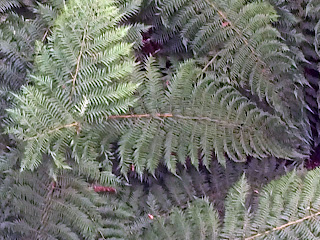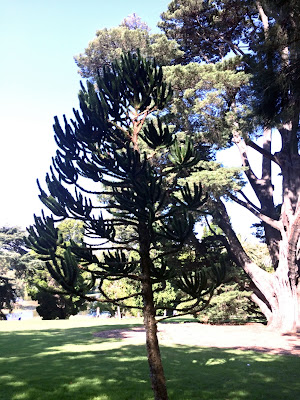 |
| The Royal Exhibition Building |
Differences happen, and that's ok. It's true that I wasn't prepared for not being able to get groceries on Good Friday, so we ate eggs and whatever else I could scrounge in the kitchen for dinner that night. Not terrible. In fact, the fact that I shop pretty much daily (the produce is so good when fresh,) is, overall, a positive.
John being off work, we spent most of the weekend touring the city on our bikes. There is an incredible bike path to the downtown area where we don't have to compete with any vehicular traffic, so there we went. The amount of expense the city went to. . . and the infrastructure to have this bike path pass under at least 8 underpasses, many by the Yarra River, really is extraordinary. Lots of other folks use it, too.
 A potter friend of mine from the ceramics studio participated in the arts show that was held in The Royal Exhibition Building, which is not a far bike ride away. This building was built in 1879 for what was supposed to be a temporary exhibition: specifically the 1880 International Exhibition, which was the southern hemisphere's equivalent to a World's Fair. It was recently granted a World Heritage Building site, and was Australia's first. Everything on the inside is wood, though obviously lighting was retrofitted some time later.
A potter friend of mine from the ceramics studio participated in the arts show that was held in The Royal Exhibition Building, which is not a far bike ride away. This building was built in 1879 for what was supposed to be a temporary exhibition: specifically the 1880 International Exhibition, which was the southern hemisphere's equivalent to a World's Fair. It was recently granted a World Heritage Building site, and was Australia's first. Everything on the inside is wood, though obviously lighting was retrofitted some time later. Really quite a gorgeous space to hang out in, though we eventually left our bikes and headed out on foot to see parts of the CBD that we haven't seen before. It's a big city.
Below, the focus of my intent was an old hotel in the center of the picture, but in typical Melbourne fashion, old mixes with new without much concern. This is a very dense city, and practicality seems to rule over everything else.

Likewise with the old theater shown below. What a masterpiece. What a mess. What a life.
Walking it back a bit, I gave these guys the Coolest sellers at the Art Festival Award. They were re-purposing old tires into very cool things. Clever name, too: "Retyred". (in the British fashion, our "tire" is spelled "tyre") I did ask the blokes (catch the Aussie lingo there?) if it was ok to photograph them and their work. They were happy to oblige.

 |
| Retyred. Are these guys fabulous or what? |
And tonight, as is also our tradition, we're going out for a nice dinner. We fondly remember many previous Easters with long conversation and wine soaked dinners with the kids after some long hike or another. We found a new Eastern European spot called "Little Odessa". I'll let you know how it goes!

















































